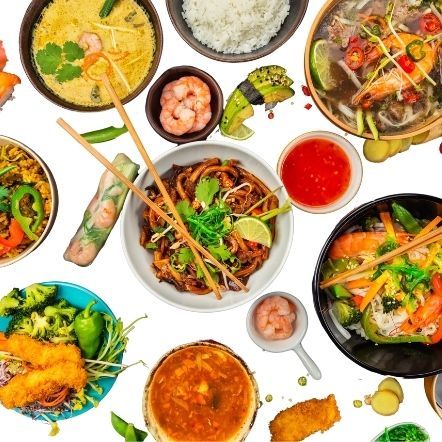
Glutenous Rice, Tamari Soy Sauce, Miso... are they all Gluten-Free?
We have talked about what gluten is and the effect of it in our last blog about what is gluten. Today we are jumping into the topic of where are these wheat proteins hiding in our everyday foods.
I'd like to challenge you with 7 types of food to see if they are gluten free or not. Some are tricky questions so read carefully!
True or False: Some Common Misconceptions of Gluten-Free Foods
I do come across many questions regarding what food contains gluten and I understand it can be rather confusing. Specifically in this article, I want to share some common questions about certain Japanese food items that may contain gluten, which might surprise you! There seems to be a misconception that Asian food is gluten free, which is a big mistake. Let's play some TRUE & FALSE!
Q.1 Glutenous rice is gluten-free.

TRUE! Glutenous rice is gluten-free. The name is misleading but it simply comes from the fact that glutinous rice gets a glue-like texture and becomes sticky when it is cooked. This sticky-ness is due to the type of starch in the rice (amylopectin) and not gluten, which is a protein.
Q2. Mochi is not gluten-free.

FALSE! Yes, Mochi is gluten-free. Mochi is made out of glutinous rice and it is gluten free!
Q3. All Asian diet is gluten-free.

FALSE. When one goes on a gluten-free diet, many think they are safe by sticking to an Asian diet because it is rice-based. However, this is not the case. Yes, Asian food is mostly rice-based, but northern Chinese cuisine do contain a lot of wheat products such as dumplings and wheat flour noodle, and also have condiments like soy sauce (hidden wheat in soy sauce). Many Japanese dishes also contain wheat such as Ramen, Udon, Tempura and soy sauce once again.
Q4. Tamari soy sauce is not gluten-free.

TRUE! Not all Tamari soy sauces are gluten free. Most soy sauces contain wheat Koji (a malted wheat) for the fermentation. The word 'Tamari' (溜り) has nothing to do with being gluten free in the Japanese language and it just one of the many types of soy sauces that the Japanese use. In particular, Tamari soy sauce is a thick, strong soy sauce and it can be made with wheat Koji. It is very hard to identify if its gluten free from the product name and it is crucial to check the ingredients list to see if any wheat is used or not.
At FoodCraft, we carry a wide range of different gluten free Tamari soy sauces and also the soy free alternative coconut aminos.
Q5. Miso is gluten-free.
FALSE. Although most Misos are made from fermented rice and soy, there are a few Misos made from wheat as well. Mugi (wheat) miso (some are called barley miso) is one of the commonly used wheat miso and this will contain gluten.
Q6. Asian noodles are gluten-free.

FALSE. Just like pasta, most are made out of wheat but there are gluten-free options such as rice noodles and glass noodles that are made out of mung bean starch or potato starch. Also, if you are very intolerant to gluten, you need to be careful because even though the noodle itself may be gluten free, the sauces they use to marinade/stir-fry may not be gluten free. Always double check with the restaurant what they use to cook the dishes with!
Q7. Soba noodles are gluten-free.

FALSE. Soba noodles are mainly made out of buckwheat, which is gluten-free but may also contain wheat. The most common soba is called Ni Hachi soba (二八蕎麦), which means Ni (Two) Hachi (eight) 20% Wheat and 80% Buckwheat. There is such thing as 100% Buckwheat Soba, which is called Jyuu Wari Soba (十割蕎麦). This is great alternative as it is gluten-free!
How did the mini-quiz go? Pretty tricky right?
No matter what item it is, it is very important to always check the food label to see what ingredients are used in the product. Why we focused on Japanese food items in this article is because a lot of our products that come from Japan often do not have the complete English labels. Thus, it can be hard to tell what it is made out of.
Here's a simple guide from glutenfree.com on what you can and should avoid on a gluten-free diet!

If you are interested in buying other gluten-free products from around the world, we have many other items for different cuisines. Feel free to take a look at our Gluten-Free collection at our store! In terms of Japanese products, if you you have any questions about the ingredients, please feel free to contact us and we will be happy to answer!
